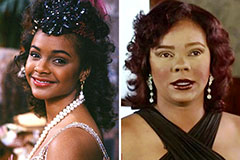With the fascinating and commonly uncertain world of specialist wrestling, championship belts hold a value that transcends mere embellishment. They are the utmost symbols of accomplishment, effort, and prominence within the made even circle. Amongst one of the most respected and historically rich titles in the market are the WWF Championship Belts, a lineage that dates back to the very foundation of what is currently called copyright. These belts have not just represented the peak of wrestling expertise but have likewise advanced in design and definition along with the promotion itself, ending up being renowned artefacts valued by followers worldwide.
The journey of the WWF Championship began in 1963 when the Entire World Wide Wrestling Federation (WWWF), the precursor to the WWF and eventually copyright, was developed. Following a dispute with the National Wrestling Alliance (NWA), Northeast promoters developed their own banner and recognized Buddy Rogers as their inaugural WWWF Whole world Heavyweight Champion on April 25, 1963. Surprisingly, some accounts suggest that Rogers was awarded the WWWF title belt, which was an old United States title he currently had, as a placeholder till a brand-new layout could be produced.
Throughout the WWWF period (1963-1979), the championship belt undertook a number of iterations, usually coinciding with the tenures of its most prominent holders. Bruno Sammartino, the epic "Living Legend," held the title for an remarkable mixed total of over 4,000 days throughout two regimes. Throughout his time, different designs were seen, including one formed like the adjoining USA, highlighting the local origins of the promo. Later on, a more traditional style including 2 wrestlers grappling above an eagle became synonymous with Sammartino's 2nd regime and the champions that followed him, such as " Super Star" Billy Graham and Bob Backlund.
The year 1979 marked a considerable shift as the WWWF officially became the World Fumbling Federation (WWF). This rebranding would ultimately cause modifications in the championship's name and appearance. In the very early 1980s, as the WWF started its ascent in the direction of coming to be a worldwide sensation, a bigger, environment-friendly natural leather belt with gigantic gold plates was presented. This layout included a wrestler holding a champion with the world behind him, absolutely proclaiming the owner as the " Whole world Champ." Notably, the side plates of this variation provided the family tree of previous champs, a custom that recognized the title's rich background. This renowned belt was held by numbers like Bob Backlund, The Iron Sheik, and, most notoriously, Hunk Hogan, that brought it throughout the "Hulkamania" period, a period of unmatched mainstream success for the WWF.
The mid to late 1980s saw the introduction of what lots of take into consideration among the most beloved designs in battling background: the "Winged Eagle" champion. Debuting in very early 1988, with Hulk Hogan as the wwf belts initial owner, this style included a marvelous eagle with outstretched wings as the focal point, flanked by smaller side plates. The "Winged Eagle" belt became a icon of excellence throughout the late 1980s "Rock 'n' Fumbling" period and well into the 1990s "New Generation" era. Famous champs such as Randy Savage, The Ultimate Warrior, Bret " Gunman" Hart, and Shawn Michaels all proudly held this version of the title. The "Winged Eagle" also transitioned right into the very early years of the " Perspective Era," with "Stone Cold" Steve Austin being the last full time champ to use it.
The " Perspective Period," which blew up in appeal in the late 1990s, brought with it a extra hostile and edgy aesthetic, shown in the WWF Champion layout. In late 1998, the " Huge Eagle" belt was introduced. This style included a bigger main plate with a popular WWF " scrape" logo design, representing the firm's contemporary identification. While keeping a feeling of reputation, the " Huge Eagle" style aligned with the rebellious spirit of the age and was held by fabulous numbers like "Stone Cold" Steve Austin, The Rock, and Mick Foley.
As the calendar turned to the brand-new centuries, the WWF underwent another makeover, coming to be World Fumbling Amusement (copyright) in 2002. This age additionally saw the marriage of the WWF Championship with the copyright Champion ( gotten after copyright's acquisition of World Championship Wrestling). The " Undeniable" championship was stood for by both the " Huge Eagle" and the copyright's "Big Gold Belt" being held concurrently. This marriage was short-lived, as the re-established copyright split its lineup into 2 brands, Raw and copyright, leading to the creation of a brand-new Entire world Heavyweight Championship for the Raw brand name, while the original title became unique to copyright and was renamed the copyright Championship.
Ever since, the copyright Champion has continued to progress in name and design. In the mid-2000s, John Cena presented the " Rewriter" belt, a questionable yet unquestionably attention-grabbing layout featuring a big copyright logo that might spin. This reflected Cena's personality and attract a more youthful target market. Subsequent styles have actually intended to blend modern appearances with a sense of history and status.
In recent times, specifically because April 2022, the copyright Champion has been defended alongside the copyright Universal Champion as the Indisputable copyright Universal Championship, though both titles maintained their individual family trees. Originally stood for by both belts, a single, unified design eventually emerged, adorned with black rubies and the owner's personalized side plates. As of April 13, 2025, Cody Rhodes holds the Undisputed copyright Champion, having unified it after defeating Roman Reigns at copyright XL in 2024. Following his victory, copyright officially renamed the combined title to the Undeniable copyright Championship.
The WWF Champion Belts, throughout their different iterations, have acted as greater than simply rewards. They stand for heritages, periods, and the many tales told within the fumbling ring. Each layout is fundamentally linked to the champs that held them and the durations they specified. From the timeless majesty of the "Winged Eagle" to the bold declaration of the "Spinner" and the present unified design, these belts are concrete pieces of wrestling background, instantaneously recognizable symbols of success in the entire world of professional fumbling. Their evolution mirrors the development of the firm itself, continuously adapting to the moments while forever recognizing the abundant custom upon which they were developed.
 Edward Furlong Then & Now!
Edward Furlong Then & Now! Brian Bonsall Then & Now!
Brian Bonsall Then & Now! Lark Voorhies Then & Now!
Lark Voorhies Then & Now! Heath Ledger Then & Now!
Heath Ledger Then & Now! Hailie Jade Scott Mathers Then & Now!
Hailie Jade Scott Mathers Then & Now!